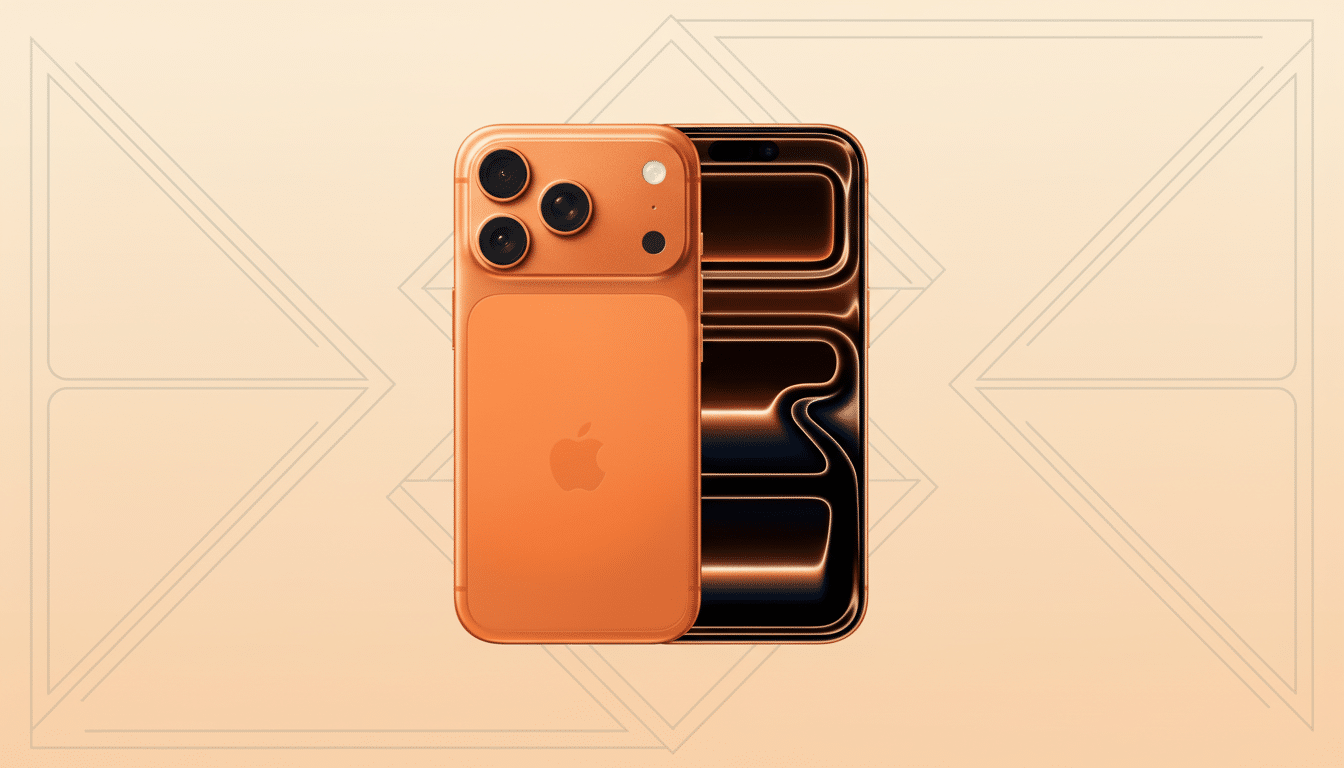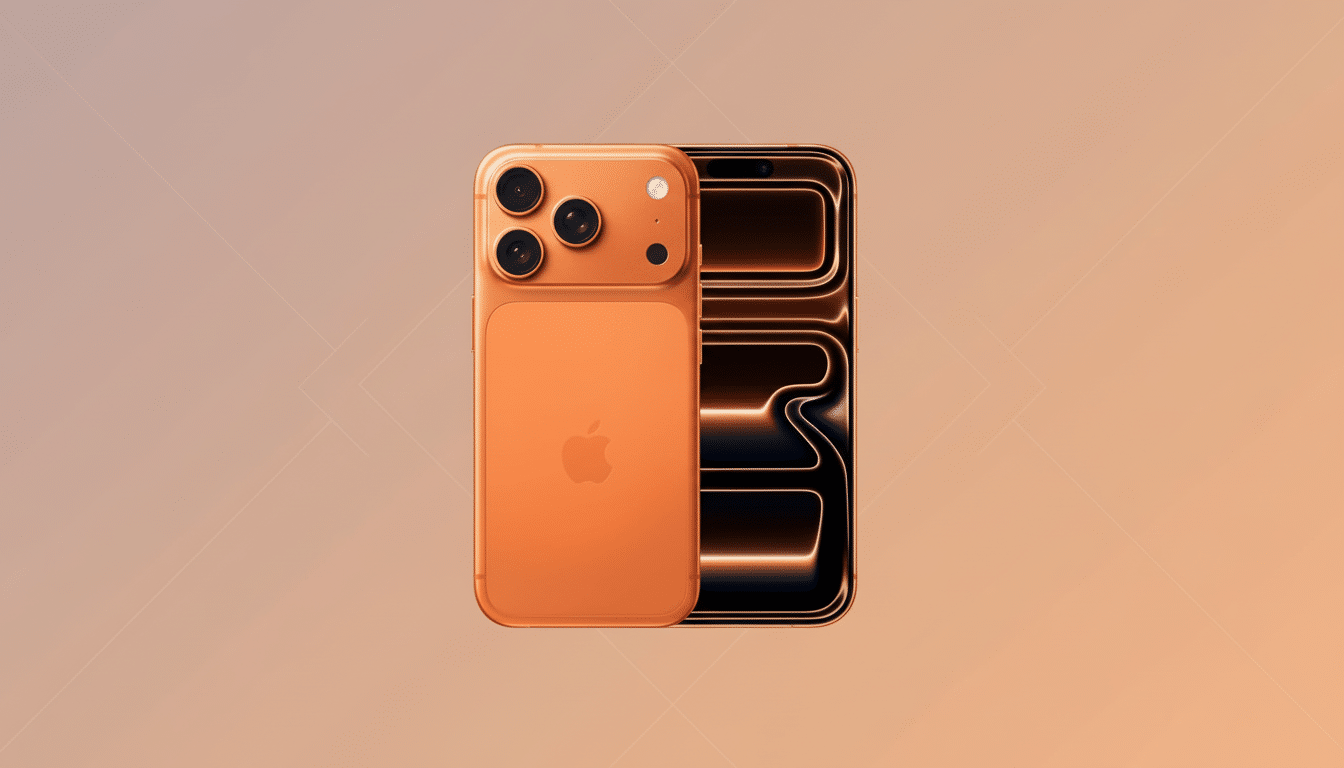If, all of a sudden, your Cosmic Orange iPhone 17 looks more rose gold than citrus, the problem probably isn’t a factory blemish. It’s your cleaning routine. User forums and Apple-focused outlets have reported one common story behind the color change: Peroxide-based products reacted with the phone’s anodized aluminum frame.
Why Your Orange iPhone 17 Is Suddenly Pink
The back, made of glass, remains a bright orange, but the aluminum band fades to pink. That mismatch is a tell. The frame is made from anodized aluminum, which gains its color from dye molecules trapped in the microscopic pores that are formed during the process of anodization — slowly pouring oxygen-rich water over aluminum and then sealing it after it has been colored. Powerful oxidizers, particularly hydrogen peroxide and bleach, are able to assault those dyes, removing their color and unearthing a pinkish tint.

In real-world terms, that can be as benign as wiping down a kitchen counter with a bathroom cleaner or an all-purpose spray, or using something like hand sanitizer repeatedly over time and eventually bleaching the finish out.
The effect can appear patchy initially, then move along edges and areas where hands touch more often.
The Chemicals Behind the Color Shift on iPhone 17
Anodizing thickens the naturally occurring oxide layer on aluminum and leaves behind a honeycomb of pores that are dyed and sealed. Peroxide is a powerful oxidizer; it breaks up the chromophores — the elements of dye molecules that give them color. After that, there’s no easy way to “re-dye” the metal without re-anodizing.
And here’s the wrinkle most users overlook: many disinfectants sold for home use are oxidizers. Even some hand rubs using the widely used WHO formula contain small amounts of hydrogen peroxide. You might not ever directly spray the phone, but regular contact with your hands or a cloth can result in enough of a change to the finish over time.
For just this reason the industry guidance to professionals from the Aluminum Anodizers Council is not to use strong oxidizers and harsh chemicals on dyed anodized surfaces. It’s not really a new thing — that’s materials science, doing what materials science does.
What Apple Recommends You Use to Clean iPhone 17
Apple’s support documentation, in contrast, is pretty blunt: Don’t use products containing bleach or hydrogen peroxide; don’t use aerosol sprays or solvents; avoid abrasives. Accepted products are 70% isopropyl alcohol wipes, 75% ethyl alcohol wipes, and branded disinfecting wipes from any household brand. The way you should do it is just as significant—try a soft, lint‑free cloth and quickly dab surfaces; never let liquid of any sort enter your phone’s openings.
If you have been spritzing your phone directly or scrubbing it with paper towels, stop it. Paper towels scratch finishes at a micro level, and anything you introduce after can exacerbate the chemical interaction. Spray the cloth, never the device, and don’t drench it.

Why This Is Not a Manufacturing Defect by Apple
If the frame is turning pink and the glass remains orange, that would indicate a batch color issue is not at fault, but rather chemical exposure. Restoration specialists and materials engineers have observed such results before on anodized phones and laptops when users introduced abrasive cleaners into their regimens. It should be noted that Apple’s warranty does not cover cosmetic changes and liquid or chemical damage, so you are unlikely to receive a complimentary replacement in these instances.
That doesn’t mean Apple designed a fragile product. The durable, lightweight anodized aluminum is used for this purpose; however, even strong coatings have limitations. Think of it as any other lacquered surface: approved cleaner, lintless rag, very little elbow grease.
Preventing or Minimizing Further Damage
First, ditch any cleaner with peroxide or bleach. If you use hand sanitizer with hydrogen peroxide in it, allow the product to dry completely before touching your device. Do not use glass cleaners, bathroom sprays, household cleaners or other chemical products to clean the phone.
For day-to-day smudges, switch to Apple’s sanctioned wipes or just use plain water on a microfiber cloth. If you do insist on a case, look for one with a colorfast interior; fabric dyes from cheap cases can transfer under heat and moisture, adding to the finish woes. And don’t sunbathe dyed surfaces like dashboards and windowsills, which can hasten fading.
Can You Straighten a Pinking Frame on iPhone 17?
Once dye molecules have been oxidized, the color change is permanent. Color will not polish back; this can thin finished coatings and make the appearance look worse. So that leaves you with cosmetic cover-ups (a case or skin) or to pay for a device swap. An Apple Store or an authorized service provider can provide you with an out-of-warranty replacement price, depending on your model and region.
The better strategy is prevention. Clean smart, and keep oxidizers away from anodized aluminum, and you’ll keep that Cosmic Orange looking the same as it did on day one—with no surprise pink in mind either.
Sources: Apple support guidance on cleaning iPhone, industry advice from the Aluminum Anodizers Council, and user reports collated by Apple-focused publications and public forums.

